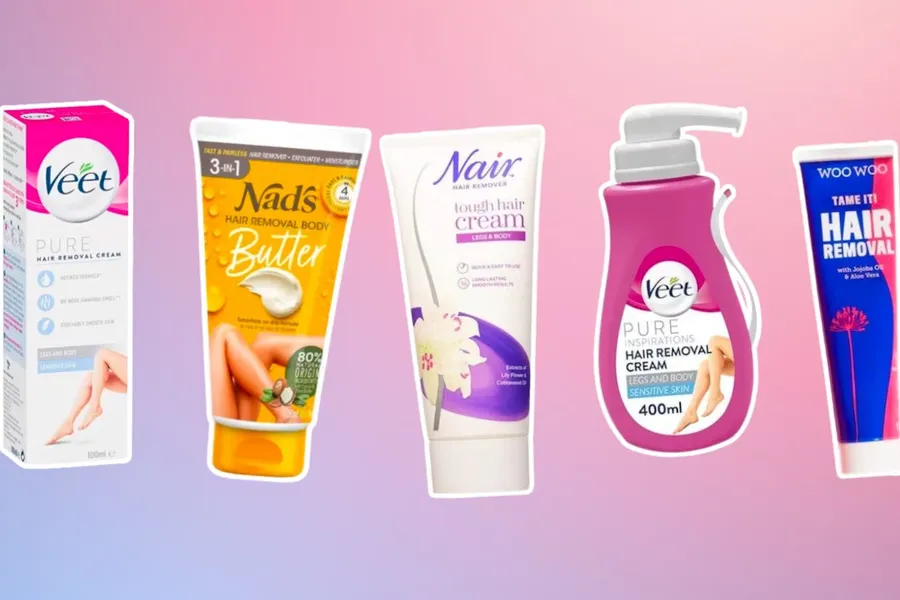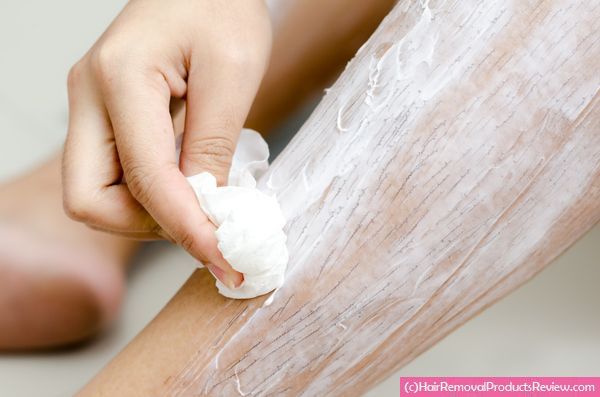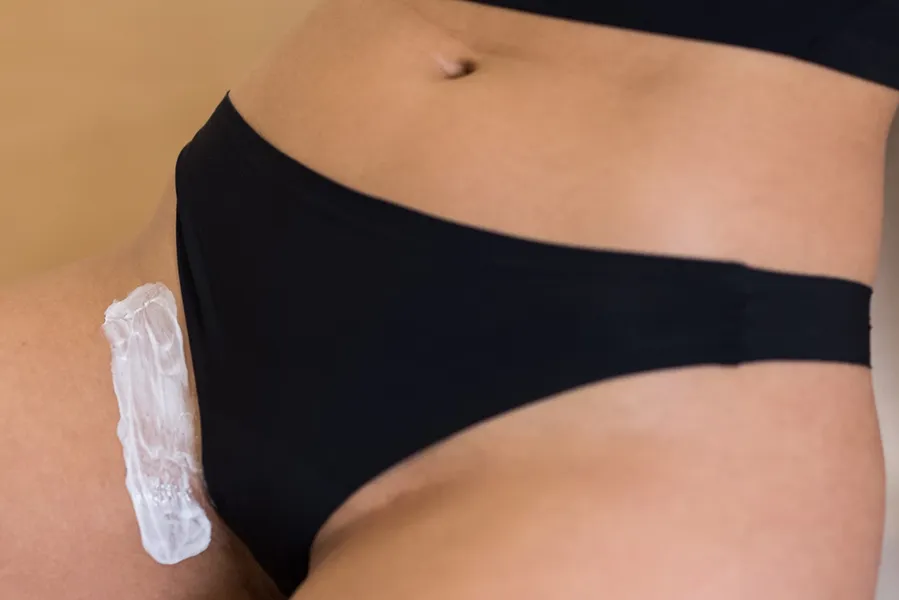Understanding Hair Removal During Pregnancy
Are you wondering if hair removal creams are safe to use while you’re pregnant? You’re not alone! Many expectant mothers face this question as they navigate personal care choices during this special time. With the surge of hormonal changes, your beauty routine might look a little different, and it’s essential to consider the products you use carefully.
In this article, we’ll explore hair removal creams, their common ingredients, and any safety concerns specific to pregnant women. By understanding the nuances of these products, you can make informed decisions that prioritize your health without sacrificing your beauty needs.
You’ll also discover safe alternatives to hair removal creams and helpful tips for maintaining your beauty regimen during pregnancy. Let’s dive in together and equip you with the knowledge you need to feel confident and comfortable in your skin!
What Are Hair Removal Creams?
Hair removal creams, often referred to as depilatories, are popular alternatives to traditional methods like shaving or waxing. These creams work by breaking down the protein structure of hair, allowing it to be easily wiped away without the need for cutting or pulling. It’s a convenient choice for many looking for a smooth finish, particularly during times when time is of the essence.
How Do They Work?
The magic of hair removal creams lies in their active ingredients, typically calcium thioglycolate or potassium thioglycolate. When you apply the cream to your skin, it penetrates the hair shaft and breaks down the keratin, the protein that makes up the hair. After a few minutes of applying the cream—ranging from 5 to 10 minutes depending on the product—you simply wipe it away along with the dissolved hair. It’s fast, painless, and leaves your skin feeling smooth.
Types of Hair Removal Creams
There are various types of hair removal creams available on the market:
- Sensitive Skin Formulas: Designed for those with delicate skin, these creams are often unscented and less harsh to minimize irritation.
- Facial Hair Removal Creams: Specifically formulated for the face, these products have gentler ingredients tailored for more sensitive areas.
- Body Hair Removal Creams: Stronger formulations are suitable for use on arms, legs, and other parts of the body with coarser hair.
- Specialized Creams for Bikini Areas: These are formulated to remove hair in specific areas, taking into account the sensitive nature of the skin in that region.
When choosing a product, always read the label to ensure it’s right for your skin type!
Popular Brands
Many brands offer hair removal creams that have garnered good reviews, such as:
- Nair: Known for its variety of formulations, Nair has options for both sensitive skin and coarse hair.
- Veet: This brand features creams for both the body and face, often enriched with moisturizing ingredients for enhanced skin care.
- Sally Hansen: Famous for its depilatory lotions, it also provides products specifically for facial hair removal.
Evolving Your Choices
Before diving further into the discussion about safety, it’s important to remember that while hair removal creams can be a quick fix, their active chemical ingredients raise questions about how they might interact with your skin and health, especially during pregnancy. Understanding these elements will better prepare you when considering their usage as part of your self-care regimen while expecting.
Next, let’s take a closer look at those common ingredients found in hair removal creams and any potential safety concerns that you should be aware of.
Common Ingredients in Hair Removal Creams
When choosing a hair removal cream, it’s vital to understand what’s actually inside the product. Most depilatories contain specific chemical ingredients designed to break down hair proteins, making them easy to wipe away. Let’s take a closer look at these common ingredients and why they may raise concerns for pregnant women.
Key Chemicals
-
Calcium Thioglycolate
- This is one of the most prevalent ingredients found in many hair removal creams. It’s effective at breaking down hair proteins, allowing for easy removal. However, the safety of thioglycolates during pregnancy is not well-studied, which leaves some women feeling uneasy about using products containing it.
-
Potassium Thioglycolate
- Similar to calcium thioglycolate, potassium thioglycolate also works to dissolve hair. It’s often included in formulations that promise faster action. Like its counterpart, it lacks thorough research regarding its safety during pregnancy.
-
Other Common Ingredients
- Sodium Hydroxide: Sometimes included to help maintain product stability, this ingredient can be quite strong and potentially irritating for sensitive skin, which many women experience during pregnancy.
- Fragrances and Dyes: While they make products smell nice and look appealing, artificial fragrances and synthetic dyes can lead to skin sensitivities, especially when your body is undergoing hormonal changes.
Understanding Safety Concerns
Given the ingredients mentioned, it’s crucial to consider the following points:
- Skin Sensitivity: Pregnancy can heighten your skin’s responsiveness to certain chemicals. What might have been okay pre-pregnancy could result in rashes or irritation now.
- Product Absorption: Some chemicals may be absorbed into the bloodstream through the skin. While there’s limited research on how this might affect a developing fetus, many expectant mothers prefer to err on the side of caution.
- Risk of Allergies: With hormonal fluctuation, pregnant women may find they suddenly develop allergies to products they previously used without issue. If you decide to use hair removal creams, always conduct a patch test on a small area of skin first.
Considering Alternatives
As you weigh your options, it’s worth exploring alternatives that may be gentler and safer for your skin during pregnancy. Options like shaving, trimming, or professional waxing could offer viable pathways for maintaining your hair removal routine without the concerns associated with chemical depilatories.
In the next section, we’ll delve into some safe alternatives, ensuring you have a variety of options to feel comfortable and confident throughout your pregnancy journey.
Safety Concerns for Pregnant Women
When it comes to hair removal during pregnancy, using creams often raises specific safety concerns. As your body undergoes constant change, understanding these concerns is crucial for ensuring your health and well-being.
Increased Skin Sensitivities
Pregnancy can bring about various skin changes, including heightened sensitivity. Hormonal fluctuations may cause your skin to react differently, leading to potential irritation from products that previously worked well for you. Hair removal creams, with their strong chemical formulations, may not be the best match. Here are some ways increased sensitivity can manifest:
- Redness and Irritation: Many women experience an increase in skin reactions like redness, itching, or burning when using hair removal creams during pregnancy.
- Allergic Reactions: It’s quite common for pregnant women to develop new allergies or sensitivities. A product that didn’t irritate you before might cause an uncomfortable rash now.
Before applying any hair removal cream, conducting a patch test is essential. Just apply a small amount to an inconspicuous area and wait 24 hours to see how your skin reacts. If you notice any adverse effects, it’s a sign to steer clear.
Changes in Your Body
Your physical changes during pregnancy go beyond just skin sensitivity. Many women notice an increase in body hair due to hormonal surges, leading to new self-care decisions. As your body develops, here are a few changes you should consider:
- Skin pH Levels: Pregnancy can alter your skin’s pH balance, making it more susceptible to irritation from strong chemicals.
- Skin Thickness: Changes in your skin’s thickness can impact how you react to hair removal products. Some may penetrate more deeply than expected, heightening the risk of irritation.
- Increased Circulation: This can lead to more pronounced reactions; what might typically be a minor irritation could feel more intense.
Precautions to Take
If you decide to use hair removal creams, take these precautions to ensure your safety:
- Read the Label Carefully: Always check the ingredients and make sure the product is specifically formulated for your skin type. Avoid products with dubious ingredients or harsh chemicals.
- Consult Your Healthcare Provider: If in doubt, discussing your choices with your healthcare provider can give you peace of mind. They may have insights about specific products or alternatives that align with your pregnancy journey.
- Consider Timing: Your skin may react differently at various stages of your pregnancy. If you notice any discomfort after use, reconsider your timing and approach.
The Bottom Line
While hair removal creams may seem convenient, they come with a suite of potential risks and challenges for any expectant mother. If you do choose to explore this route, fostering an informed and cautious approach will help ensure a safer experience.
In the following section, we’ll explore some safe and effective alternatives to hair removal creams. These options may provide you with the confidence and comfort you need as you continue on this beautiful journey of pregnancy.
Alternatives to Hair Removal Creams
If you’re feeling unsure about using hair removal creams while pregnant, you’re not alone. Many women seek safer alternatives during this sensitive time. Luckily, there are several methods of hair removal that can be effective and less risky. Let’s explore some of these options and consider their pros and cons to find what suits you best.
Shaving
Shaving is one of the most straightforward and convenient hair removal methods available. Here’s what you need to know:
-
Pros:
- Quick and Easy: Shaving can be done in just a few minutes, making it a perfect option for busy moms-to-be.
- Low Cost: All you need is a razor and some shaving cream or gel, which are easily accessible and generally affordable.
- Control Over Application: You can choose where and how much hair to remove without the risk of chemical irritation.
-
Cons:
- Potential for Cuts: As your body changes shape, reaching certain areas can become tricky, increasing the risk of nicks or cuts.
- Skin Sensitivity: Hormonal changes may make your skin more prone to irritation or bumps post-shave.
If you decide to shave, opt for a high-quality, moisturizing shaving cream that’s free of fragrances and harsh ingredients. Using a razor designed for sensitive skin can also minimize irritation.
Waxing
Waxing is another popular hair removal method offering longer-lasting results compared to shaving.
-
Pros:
- Long-Lasting Results: Waxing removes hair from the root, meaning you can enjoy smooth skin for weeks at a time.
- Finer Regrowth: Hair often grows back thinner and softer after waxing.
-
Cons:
- Painful Experience: Waxing can be uncomfortable, especially if you’re unaccustomed to the sensation or if your skin is more sensitive during pregnancy.
- Risk of Irritation: Many women experience redness or bumps after waxing, which can be exacerbated by pregnancy hormones.
If you choose to wax, consider visiting a professional who specializes in waxing during pregnancy. They can guide you on how to minimize discomfort and handle sensitive areas safely.
Laser Hair Removal
For those looking for a more permanent solution, laser hair removal might be an option worth discussing.
-
Pros:
- Long-Term Reduction: Laser hair removal can significantly reduce hair growth over time, leading to fewer treatments.
- Convenience: Once completed, you won’t have to worry about regular hair removal for a long while.
-
Cons:
- Not Recommended During Pregnancy: Most dermatologists advise against starting laser hair removal during pregnancy due to potential skin changes and unknown effects on the fetus.
- Higher Cost: This method can be more expensive compared to shaving or waxing.
If you have previously started treatments before pregnancy, it’s crucial to consult with your dermatologist about whether to continue or pause until after childbirth.
Tweezing
For small areas or finer hair, tweezing can be a great option.
-
Pros:
- Precision Hair Removal: Great for eyebrows or a few stray hairs. You can control exactly what you want to remove.
- Low Cost: Just a pair of tweezers is all you need!
-
Cons:
- Time-Consuming: Tweezing can take longer, especially if you have a larger area to work on.
- Discomfort: It’s not the most pain-free option, especially for sensitive areas.
Conclusion
As you consider these alternatives, remember that it’s all about what feels comfortable and safe for you. Each method has its own unique benefits and drawbacks. You may find that a combination of these hair removal techniques works best as your pregnancy progresses and your body changes.
In the next section, we’ll share some helpful tips for safe hair removal practices during pregnancy, ensuring you can stay smooth and comfortable throughout this beautiful journey.
Tips for Safe Hair Removal Practices During Pregnancy
Once you’ve navigated the landscape of hair removal options and identified what feels right for you, it’s essential to adopt safe practices for achieving your desired look during pregnancy. Here are some practical tips to ensure your hair removal methods are both effective and safe, minimizing any potential risks to you and your baby.
Conduct a Patch Test
Before diving into any new hair removal product, especially creams, it’s crucial to perform a patch test. This process helps you determine how your skin will react before applying it to larger areas.
How to perform a patch test:
- Apply a small amount of the product on a discreet part of your body, like the inner arm.
- Wait 24 hours to see if any adverse reactions occur, such as redness, itching, or burning.
- If you notice any irritation, it’s best to avoid the product altogether.
Choose Products Carefully
When selecting hair removal creams or other products, be diligent about reading labels. Look for items labeled as hypoallergenic, fragrance-free, or specifically designed for sensitive skin. This can help reduce the risk of allergic reactions or skin irritation.
Key things to look for:
- Ingredients that are free from harsh chemicals and allergens
- Recommendations for use during pregnancy from trustworthy sources
- Products with minimal additives or synthetic dyes
Stay Hydrated and Moisturize
Hydration is key to maintaining healthy skin, especially during pregnancy when hormonal changes can affect its texture and sensitivity. Drinking plenty of water and using a good moisturizer can help keep your skin supple and less prone to irritation, making your hair removal experience more enjoyable.
Moisturizing tips:
- Apply a gentle, unscented lotion after hair removal to soothe the skin.
- Consider using natural oils like coconut or almond oil, which provide moisturization without the risk of chemicals.
Opt for Timing
Timing can play a significant role in skin sensitivity. If you find your skin reacts poorly at certain times, try avoiding hair removal right before or during your period or when you’re more fatigued. Identifying your skin’s peak sensitivity times may help you choose a better moment for hair removal.
Build a Routine
Establishing a consistent hair removal routine might lessen the chances of irritation as your body becomes accustomed to your approach. Regular, gentle hair removal sessions can promote healthier skin regrowth, helping you manage sensitive skin better.
Consider Professional Help
If you’re unsure about handling hair removal on your own, consider consulting with a professional. A licensed esthetician or dermatologist can provide personalized advice and may offer pregnancy-safe options that you might not be aware of. They can guide you through effective waxing techniques, tweak product usage, or even suggest alternative methods.
Listen to Your Skin
Finally, trust your instincts and pay attention to your skin’s responses. Pregnancy can bring about unexpected changes, so feel free to adjust your hair removal methods based on what feels right for you and your body at any moment. If a method doesn’t seem to agree with you anymore, it’s perfectly acceptable to try something different.
Finding a hair removal routine that works for you during pregnancy can be challenging, but with careful attention and the right precautions, it can be managed safely and comfortably.
With these tips in hand, you can prepare to make informed choices about your hair removal options during pregnancy, allowing you to feel confident and beautiful throughout this journey.
In the following section, we’ll wrap up our discussion on the safe practices for hair removal while pregnant, helping you make well-informed choices that suit your unique needs.
Making Informed Choices for Hair Removal
In conclusion, making informed choices about hair removal during pregnancy is essential for your safety and comfort. Throughout this article, we’ve discussed what hair removal creams are, their common ingredients, and the safety concerns you may face as a pregnant woman. It’s crucial to weigh the risks and benefits carefully and to consider alternatives that might be safer for you during this special time.
Remember, it’s always a good idea to consult with your healthcare provider before trying any new products. Your health and well-being should be your top priority. By staying informed and exploring safe hair removal practices, you can confidently navigate this journey while embracing the changes that come with pregnancy.









I have been using hair removal creams for years! I thought they were harmless. But this article really opened my eyes. Switching to a safer method seems like the best option now. Any suggestions?
You might want to try trimming instead! Just keep it simple and low maintenance.
Great suggestion, Ethan! Trimming is a safe alternative and much easier during pregnancy.